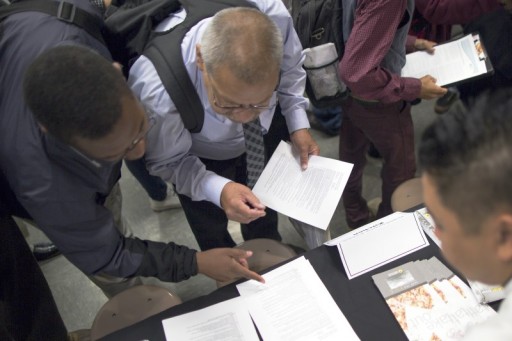 Washington – The number of Americans filing for unemployment benefits fell last week to near a 43-year low, suggesting labor market resilience even though hiring slowed sharply in May.
Washington – The number of Americans filing for unemployment benefits fell last week to near a 43-year low, suggesting labor market resilience even though hiring slowed sharply in May.
Subscribe to our Daily Roundup Email
Initial claims for state unemployment benefits declined 18,000 to a seasonally adjusted 259,000 for the week ended June 18, the Labor Department said on Thursday. The drop left claims not too far from a 43-year low touched in March.
Claims for the prior week were unrevised. Economists polled by Reuters had forecast initial claims falling only to 270,000 in the latest week. Claims have now been below 300,000, a threshold associated with a strong job market, for 68 straight weeks, the longest streak since 1973.
The four-week moving average of claims, considered a better measure of labor market trends as it irons out week-to-week volatility, fell 2,250 to 267,000 last week.
A Labor Department analyst said there were no special factors influencing last week’s claims data and no states had been estimated.
The claims report covered the survey period for June non-farm payrolls. The four-week average of claims declined 8,750 between the May and June survey periods, suggesting an improvement in job growth after payrolls increased only 38,000 in May – the smallest increase since September 2010.
Federal Reserve Chair Janet Yellen told lawmakers on Tuesday that the U.S. central bank believed last month’s slowdown in payrolls gains was transitory,” noting that “several other timely indicators of labor market conditions still look favorable.”
Labor market optimism is being spurred by near record high job openings, as well as the very low layoffs.
Thursday’s claims report showed the number of people still receiving benefits after an initial week of aid fell 20,000 to 2.14 million in the week ended June 11. The four-week average of the so-called continuing claims slipped 4,500 to 2.15 million.

Must be the President’s wise leadership !!!
Isn’t it interesting how the unemployment numbers keep dropping and the food stamp recipients keeps rising?
Yes you geniuses say what you want the president did a great job running the economy and this is proof. Since I know all you skeptics will say hey this is not the “real” unemployment as many stopped seeking jobs. Really so who are these “many” who stopped seeking jobs? Because I can’t seem to find them. One more pointer, how about open up a hiemsha publication classifieds and look at the job openings. Compare the 2016 job openings to 2009 and tell me where there are more listings. Oh and starting salary for local entry-level no eduaction required jobs are now at least $18 an hour. In 2009 it was $12 an hour. ($18 an hour is about 36k a year which is not bad for a job with no education required.)
By the way, I dislike Obama’s policies. And I think Obamacare really hurt the middle class who were already insured in terms of health costs. But the man still did a great job on the economy.
It’s quite simple, there are no jobs out there. People gave up looking, thus they aren’t included in the unemployment numbers.
Let’s talk Tachlis, 33% of Americans out of workforce, highest rate since 1978. The number of Americans aged 16 and older not participating in the labor force hit almost 93 million according to data released by the Bureau of Labor Statistics (BLS).